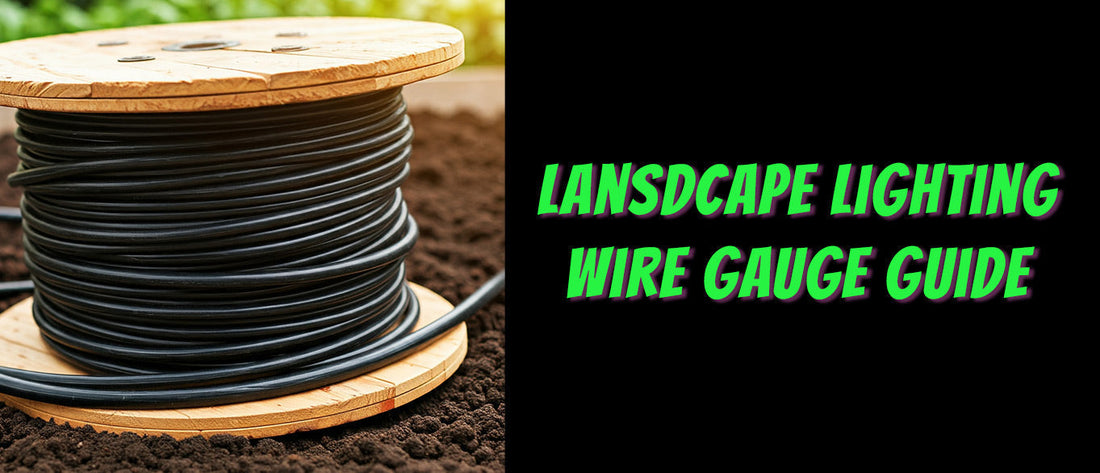At All Lighting Direct, we know that a stunning outdoor lighting system is the sum of its parts. While the fixtures themselves often get all the attention, the wire that powers them is the true unsung hero. Selecting the correct wire gauge is a critical decision that directly impacts the performance, safety, and longevity of your landscape lighting.
Understanding Wire Gauge: The Basics
When you see a wire labeled as "12/2," "14/2," or "16/2," the first number refers to its American Wire Gauge (AWG). The AWG system is counterintuitive: the smaller the number, the thicker the wire. This is because the gauge is based on the number of drawing dies the wire passes through during manufacturing. A thicker wire has fewer passes, resulting in a smaller gauge number.
- 16-Gauge Wire: This is the thinnest of the common landscape lighting wires. It's suitable for smaller projects with shorter runs and low-wattage fixtures, especially with energy-efficient LED lights.
- 14-Gauge Wire: A versatile choice, 14-gauge wire can handle a greater load and longer runs than 16-gauge, making it a popular all-purpose option for many residential installations.
- 12-Gauge Wire: As the thickest wire for landscape lighting, 12-gauge is ideal for large-scale projects, long distances, and systems with a high total wattage. It ensures minimal voltage drop over long runs.
The second number, "2," in the wire description indicates that the cable contains two insulated conductors.

The Relationship Between Length, Wattage, and Wire Gauge
Choosing the right gauge is all about balancing the demands of your lighting system with the capabilities of the wire. The two key factors are:
- Total Wattage: This is the sum of the wattage of every fixture connected to the wire run. The higher the total wattage, the more current the wire must carry.
- Cable Run Length: As electricity travels down a wire, it naturally loses voltage. This is known as voltage drop. The longer the wire, the greater the voltage drop.
A voltage drop of more than 10% can lead to problems like dimming, flickering lights, and premature bulb failure. A thicker wire (lower gauge) has less resistance and therefore experiences less voltage drop over a given distance.
To make the right choice, always use a wire gauge chart that cross-references the total wattage of your lights with the length of your cable run. For example, a 14-gauge wire might be sufficient for a 50-foot run with a total wattage of 90 watts, but for a 100-foot run, you would need to use a thicker 12-gauge wire to maintain the same wattage and avoid significant voltage drop.
Installation Best Practices: Burial and Protection
While the National Electrical Code (NEC) doesn't require low-voltage landscape lighting wire to be buried, it is highly recommended for safety and aesthetics. Most landscape wire is rated for direct burial, meaning it can be placed directly in the ground without the need for protective conduit.
However, consider these points for added protection:
- Burial Depth: The NEC provides minimum burial depths, which can vary by location and circumstance. A general guideline is a minimum of 6 inches in general areas, but this increases to 24 inches when buried under driveways, parking lots, or streets. Always consult with your local building codes.
- Protection in High-Risk Areas: If you are running wire under a paver patio or a driveway, using a rigid conduit can provide an extra layer of protection against damage from movement or weight.
By understanding the relationship between wire gauge, wattage, and run length, you can confidently select the perfect wire for your All Lighting Direct outdoor lighting system. A little planning goes a long way in ensuring your beautiful landscape lighting remains bright and reliable for years to come.

